B1+rms in MRI: Applications and Importance
In MRI, B1+rms refers to the root mean square (RMS) value of the radiofrequency (RF) magnetic field component, B1+, which excites the protons in the body. This parameter is essential for ensuring uniform and effective RF pulse delivery during MRI scans. B1+rms measures the average power delivered to the tissue over time, optimizing image quality and maintaining patient safety by managing the specific absorption rate (SAR). The unit of B1+rms is typically expressed in microteslas (µT) or milliteslas (mT)
Understanding B1+rms:
Radiofrequency Pulses: In MRI, RF pulses excite the hydrogen atoms in the body. These atoms absorb energy from the pulses and then emit this energy, which is detected to create the MRI image. The strength and distribution of the RF pulses are crucial for image quality and procedure safety.
Measurement of B1+rms: The B1+rms value measures the RF field’s effective strength over time and space within the MRI scanner. It is calculated as the root mean square of the magnetic component of the RF field (denoted as B1) over the period of the RF pulse. This measurement helps determine the amount of energy absorbed by the tissues in the body, which is directly related to the heating effects caused by RF exposure.
Relevance to SAR: The B1+rms value is related to the Specific Absorption Rate (SAR), which measures the rate at which body tissue absorbs RF energy during an MRI examination. High B1+rms values can lead to higher SAR values, increasing the risk of tissue heating. Monitoring B1+rms is essential for ensuring that the RF exposure stays within safe limits as prescribed by regulatory bodies like the FDA or under CE marking standards.
B1+rms Display in Siemens Scanner
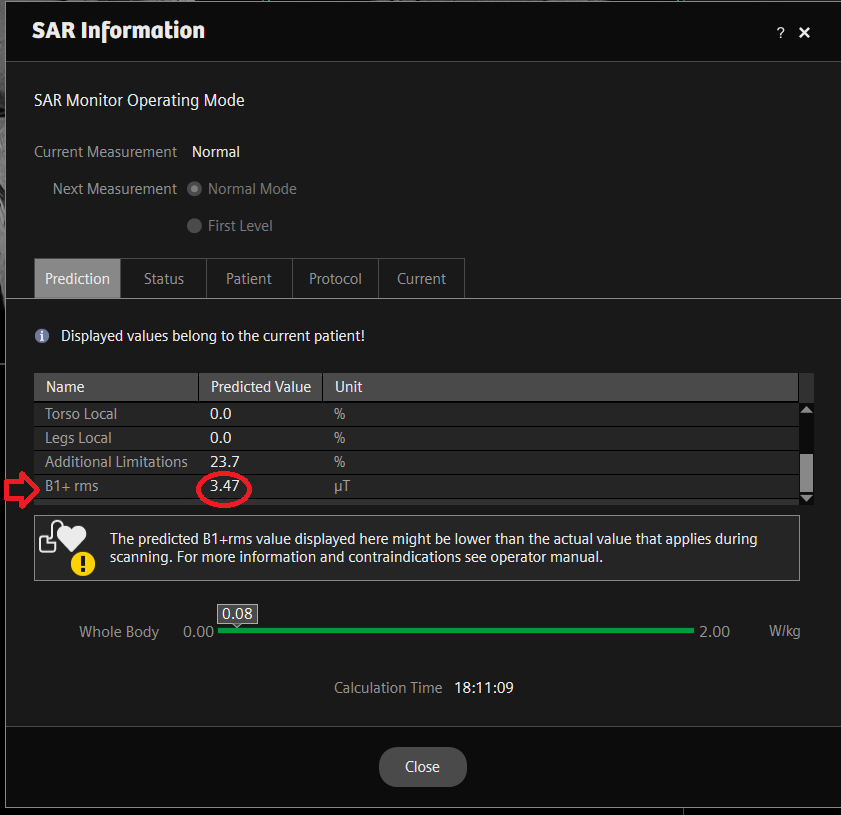
B1+rms is important for several reasons:
Safety and SAR (Specific Absorption Rate):
- The B1+ rms value is directly related to SAR, indicating the amount of RF energy absorbed by the body. Higher B1+ rms values lead to higher SAR, which can cause tissue heating. Monitoring and controlling B1+ rms is crucial for ensuring patient safety.
Image Quality:
- Consistent and appropriate B1+ rms values are necessary for uniform proton excitation across the imaging volume, which is vital for producing high-quality images.
B1+ rms is especially important for patients with implanted devices, as it provides a consistent measure of RF exposure necessary for imaging, unlike SAR, which varies significantly based on patient characteristics.
Advantages of B1+ rms over SAR
- Precision: B1+ rms is a direct measurement related to MR image creation, making it a more precise metric for RF exposure.
- Patient Independence: B1+ rms does not vary with patient size, morphology, or tissue composition, unlike SAR, which is highly dependent on these factors.
- Reproducibility: Imaging sequences configured for a specific B1+ rms value remain consistent across different patients and scans, enhancing the reproducibility of MRI results.
How to Reduce B1+ rms and SAR
- Increase RF pulse duration (Low SAR imaging mode).
- Minimize the number of slices and use the longest acceptable TR.
- Minimize the refocusing pulse flip angle in spin-echo sequences.
- Reduce the number of echoes (turbo factor or ETL) in fast spin-echo sequences.
- Increase the TR in T2 or proton density weighted spin-echo sequences.
- Use the longest acceptable TR for T1 weighted spin-echo sequences
Procedure for Modifying B1+RMS in Different MRI Scanners:
Siemens Scanners:
- Configure the protocol to start manually.
- Select “Low SAR” from the RF pulse type drop-down list.
- Minimize the Turbo factor and refocusing flip angle.
- Verify the predicted B1+RMS value in the SAR information dialog.
RF Pulse Type : Fast, B1+rms high
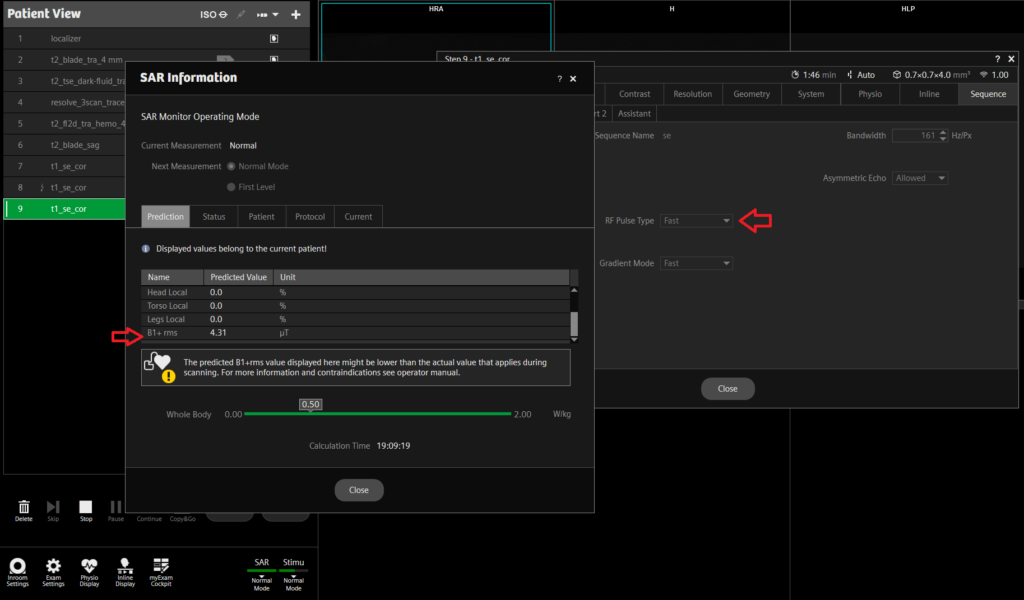
RF Pulse Type : Low SAR, B1+rms low
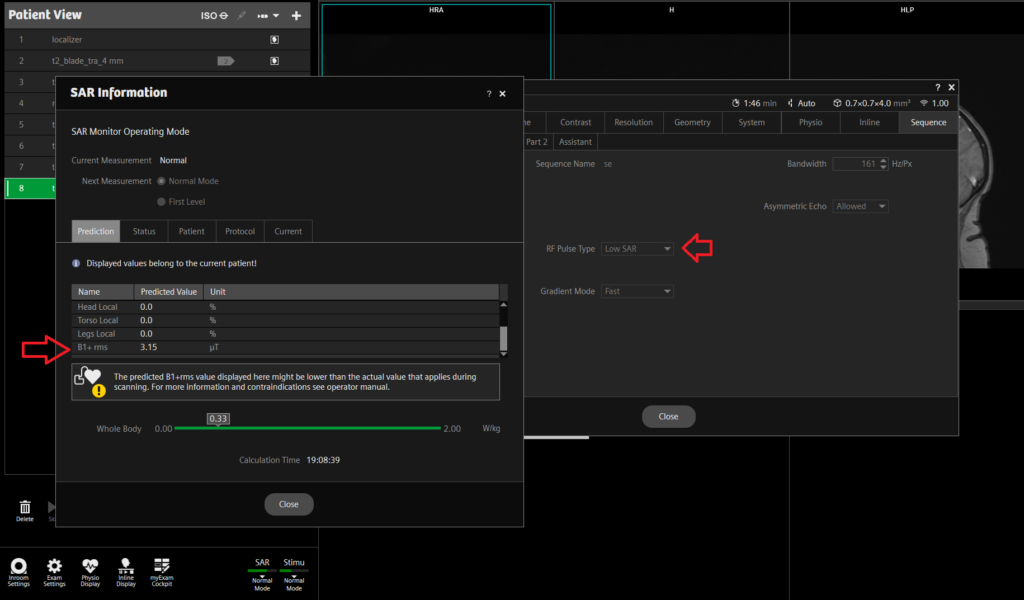
Flip angle 180 : B1+rms high

Flip angle 150 : B1+rms low
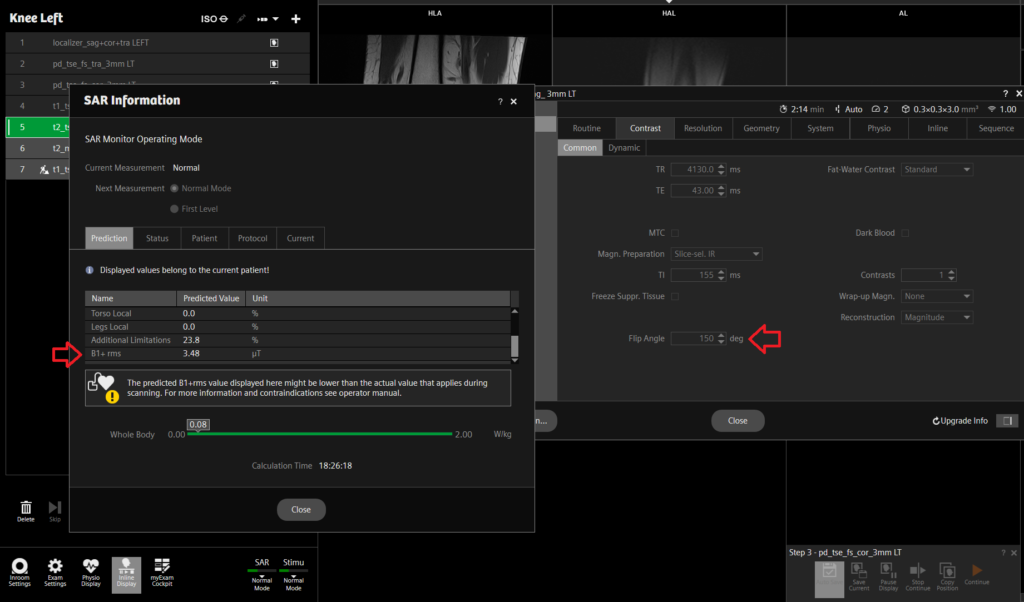
TR 1010ms, slices 30 : B1+rms high
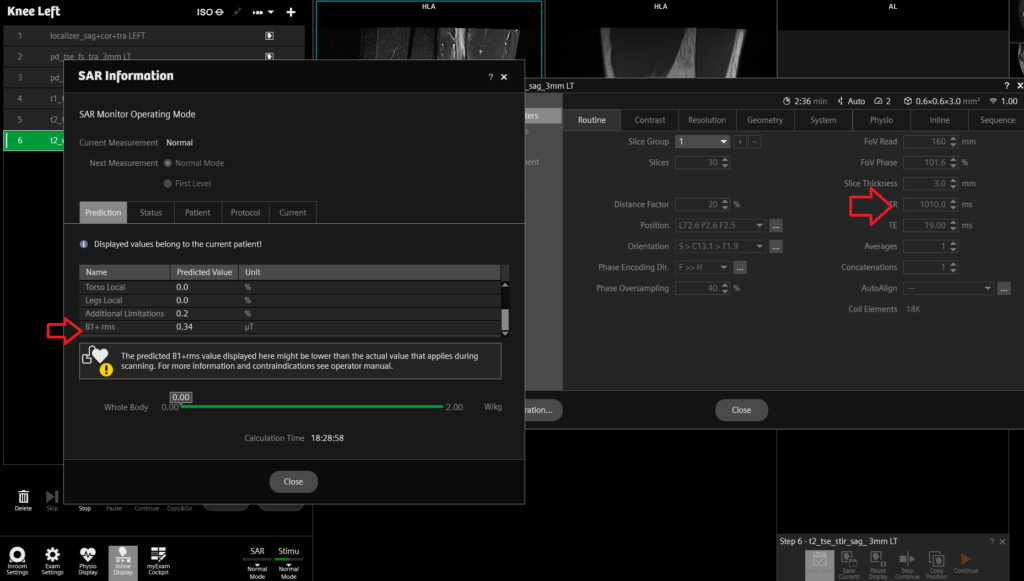
TR 2000ms, slices 30 : B1+rms low
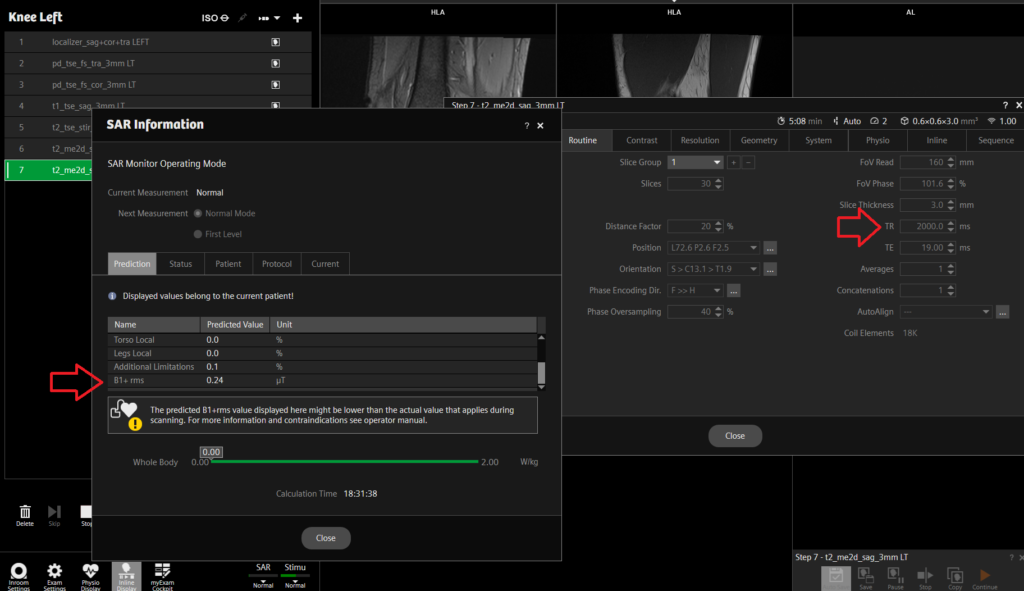
Philips Scanners:
- Set SAR mode to low.
- Minimize the refocusing flip angle.
- Reduce the TSE factor in turbo spin-echo protocols.
GE Scanners:
- Set normal dB/dt and SAR limits.
- Minimize refocusing flip angle and echo train length
References
- Medtronic. (n.d.). B1+ RMS: Understanding and Managing RF Exposure in MRI. Retrieved from https://asiapac.medtronic.com/content/dam/medtronic-com/ca-en/hcp/documents/MRI/B1+RMS%20White%20Paper%20CA.pdf
- Ibrahim, T. S., Lee, R., Baertlein, B. A., & Robitaille, P.-M. L. (2001). B1 field homogeneity and SAR calculations for the birdcage coil. Physics in Medicine & Biology, 46(2), 609–619. doi:10.1088/0031-9155/46/2/324. Retrieved from https://www.researchgate.net/publication/263716379


